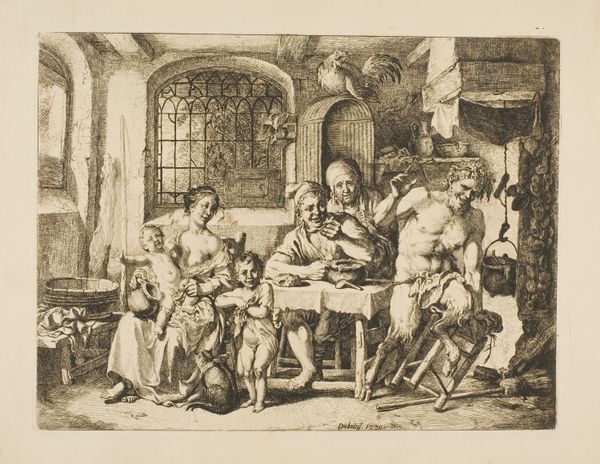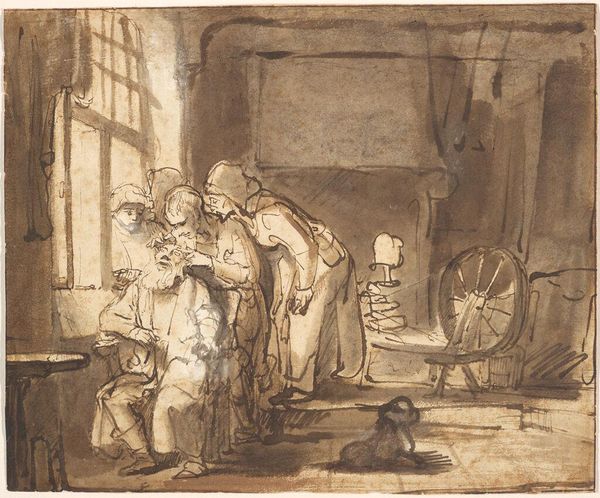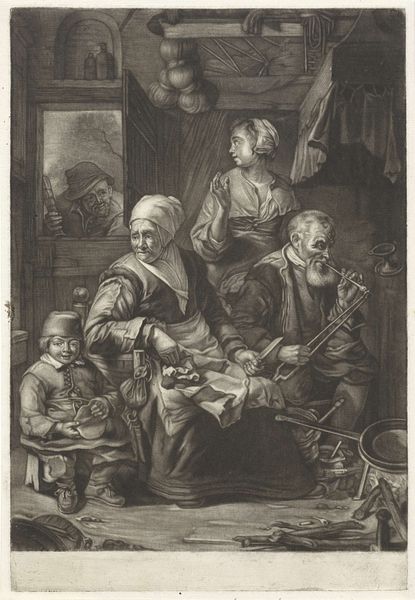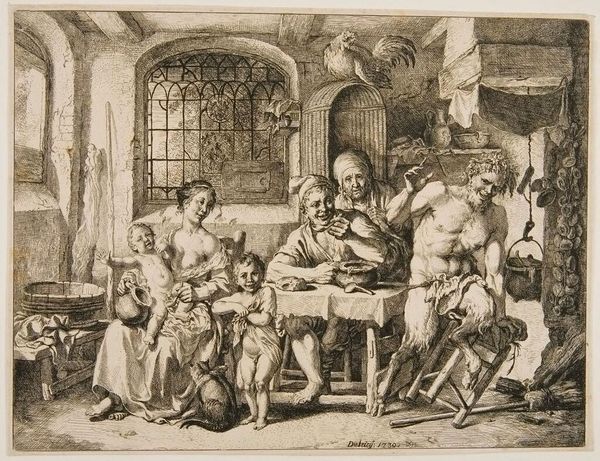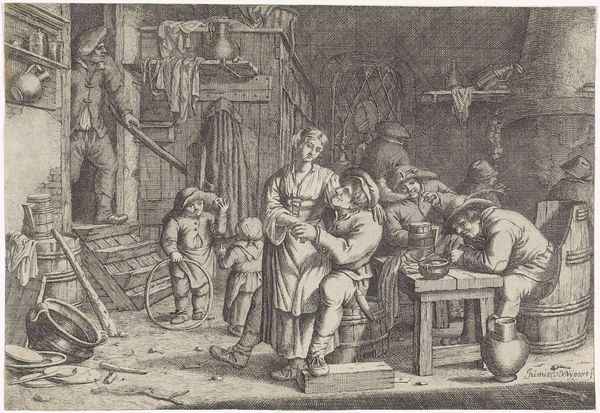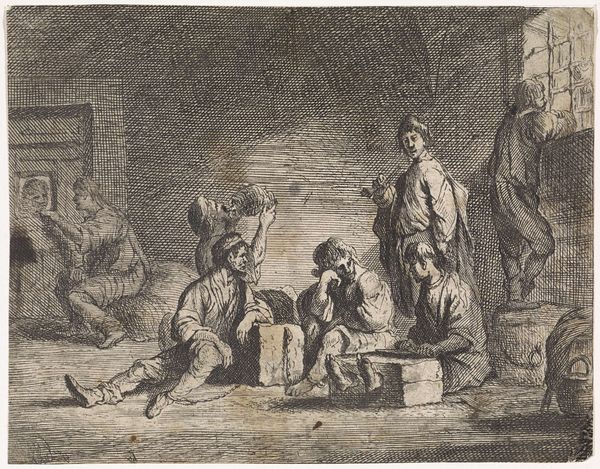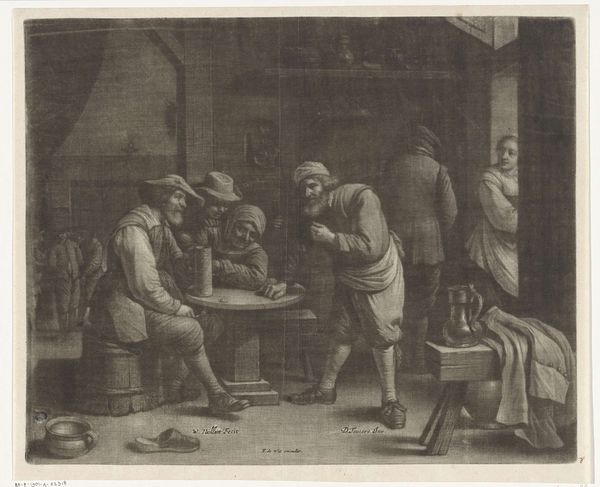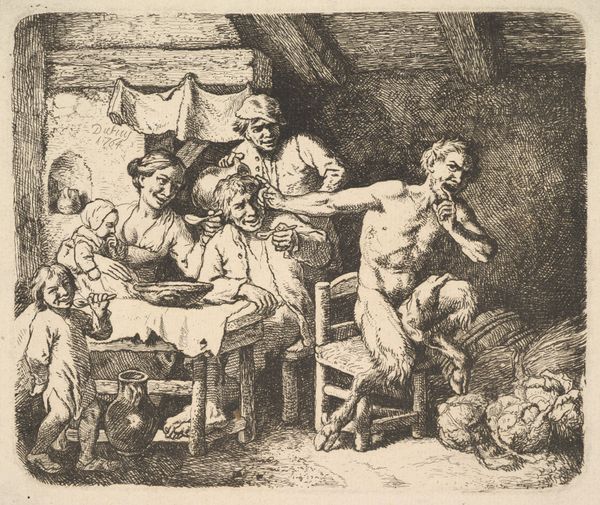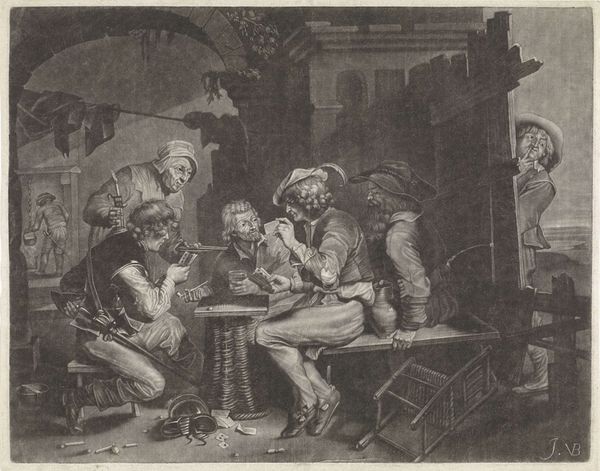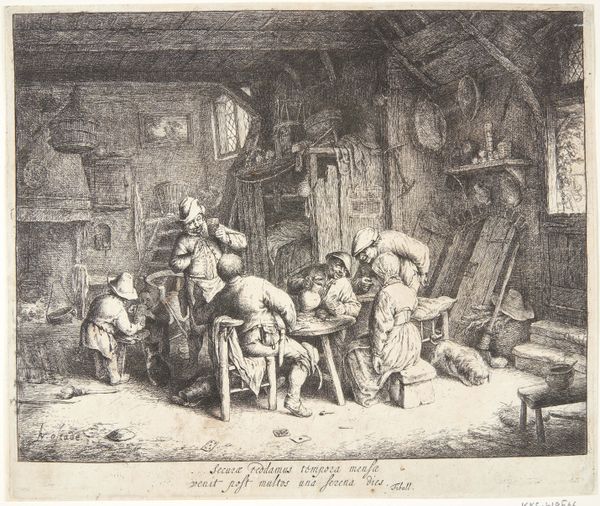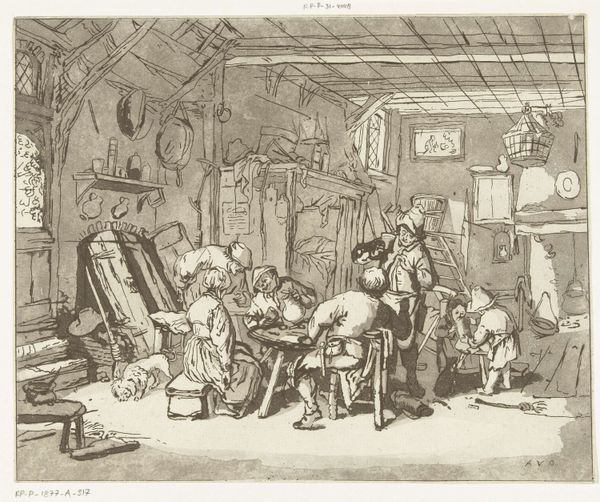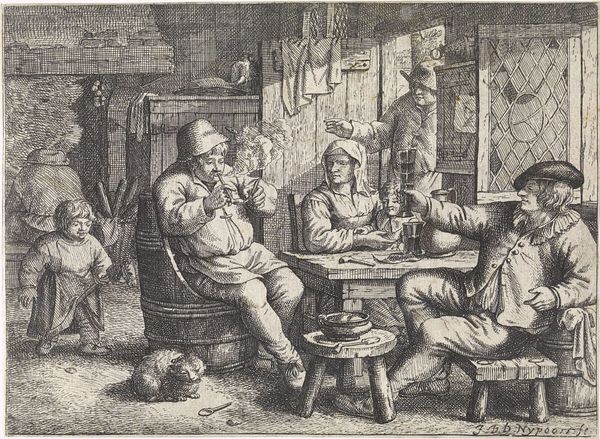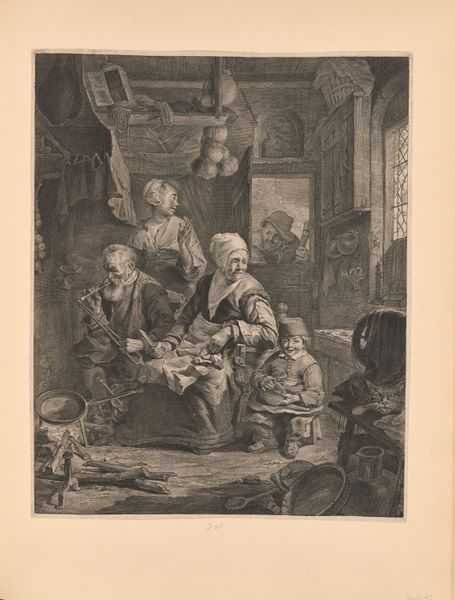
drawing, print, paper, ink, chalk, charcoal
drawing
narrative-art
baroque
charcoal drawing
figuration
paper
oil painting
ink
chalk
water
genre-painting
charcoal
Dimensions: 192 × 225 mm
Copyright: Public Domain
Curator: Welcome. Before us hangs "Four Drunken Peasants at Table," an anonymous artwork of uncertain date, presented today courtesy of The Art Institute of Chicago. Editor: Well, anonymous or not, there's definitely a story being told. The heavy ink strokes give everything a sense of unease. Four figures slumped at a table after perhaps a bit too much revelry...it’s practically dripping with implications. Curator: I see those implications, but I'm equally struck by how this drawing echoes familiar narratives in art history. The grouping, the expressions, the shared space...there’s something archetypal at work. This scene feels instantly recognizable, a timeless depiction of excess. The image of collective downfall or failure depicted is recurrent, often linked to the symbolic value associated to water as source of collective emotion and subconscious life. Editor: "Timeless," yes, but also very rooted in a specific socio-economic reality. The depiction of peasant life, especially when focusing on drinking, often served a dual purpose in Baroque art. It could be humorous and cautionary at the same time, for instance with satirical depictions like the 'peasant weddings'. This image, perhaps unintentionally, could be read as social critique about exploitation and the escapism people sometimes turned to as response to economic problems. Curator: Interesting point. Certainly, in its symbolism, intoxication frequently acts as a stand-in for other states – spiritual ecstasy or mental breakdown, and these states always bring collective transformation or rupture. The men’s postures—the slouching, the head lolling—are so specific that the symbol emerges directly from the body in this image. Editor: Absolutely. The figure pointing… what's the intention there? Are they teasing? Are they issuing a warning, judging? That ambiguity gets to the heart of how such images are entangled within broader narratives of class and power. Are they truly revelling or merely enacting social performance within parameters that remain socially legible and that render them as part of some system or collective that judges? Curator: It does seem to me like we can infer this ambiguity with this piece. I think you and I both see something potent within the simplicity of it all. The cultural resonance lingers. Editor: Indeed. In a society constantly negotiating individual freedom and societal well-being, representations of inebriation still have power, making this image—in a darkly comic way—profoundly resonant.
Comments
No comments
Be the first to comment and join the conversation on the ultimate creative platform.
